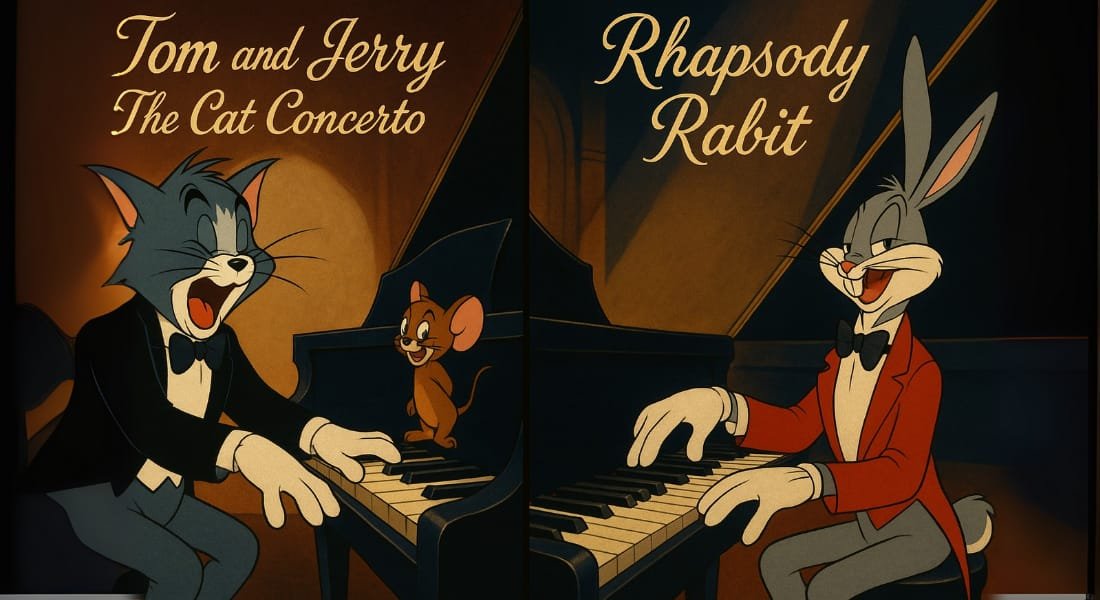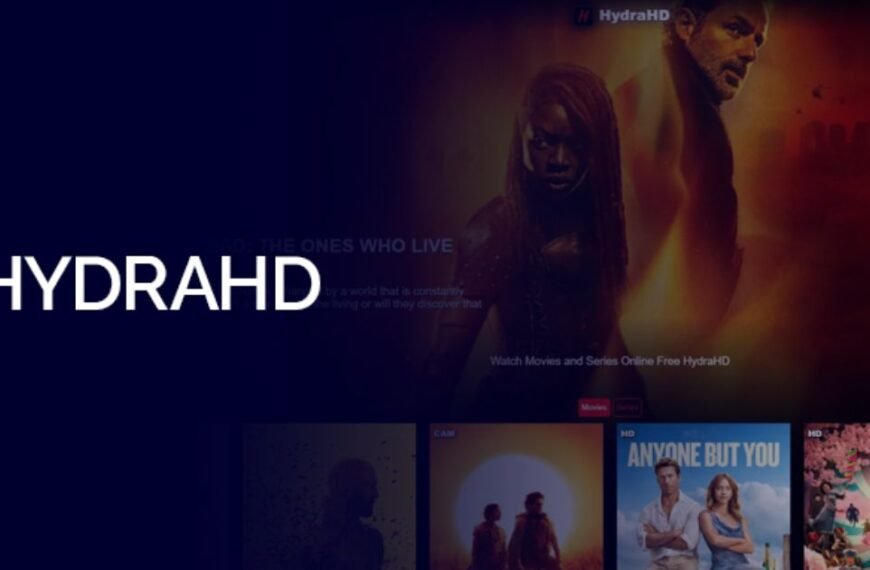When it comes to legendary animated shorts, few match the charm of Tom and Jerry The Cat Concerto and Bugs Bunny’s Rhapsody Rabbit. Both classics feature the same dramatic piece, Liszt’s Hungarian Rhapsody No. 2 paired with slapstick humor and over the top piano chaos.
Released just months apart in the 1940s, they’ve left fans wondering for decades: did one studio copy the other, or was it simply a coincidence?
In this Tom and Jerry The Cat Concerto comparison, we’ll explore their origins, animation styles, humor, and lasting cultural impact.
Background of the Cartoons
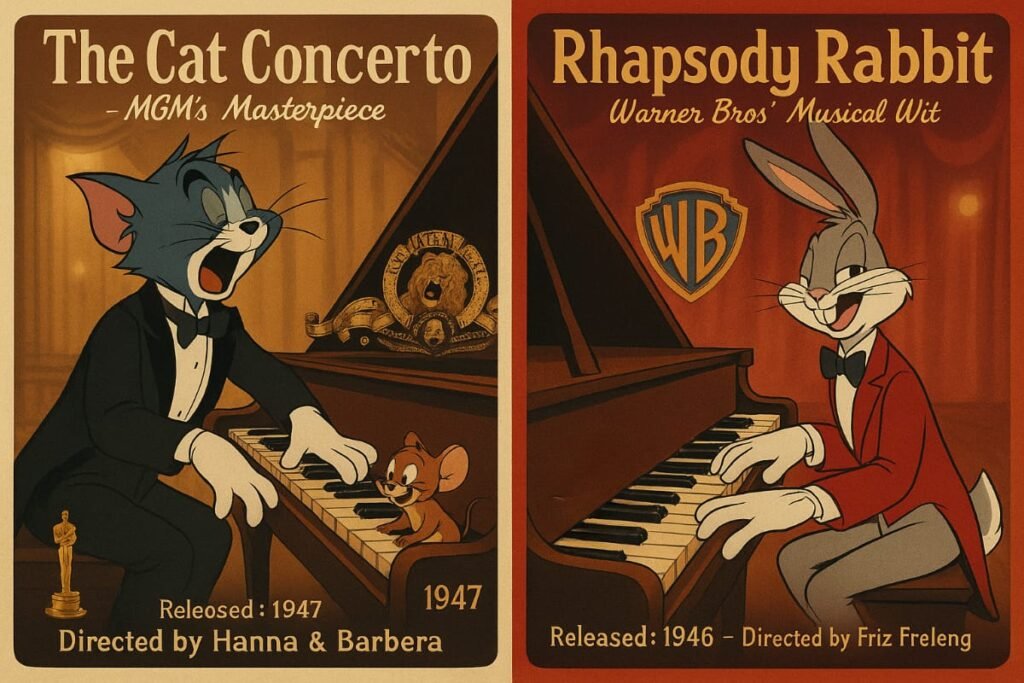
- The Cat Concerto (MGM, 1947)
Directed by William Hanna and Joseph Barbera, this short stars Tom as a concert pianist whose flawless performance is constantly sabotaged by Jerry. It won the Academy Award for Best Animated Short Film and is celebrated for its smooth animation and perfect comedic timing. - Rhapsody Rabbit (Warner Bros, 1946)
Directed by Friz Freleng, this Merrie Melodies classic features Bugs Bunny on piano, battling a mischievous mouse while tossing in his signature witty remarks. While it didn’t take home an Oscar, it remains one of Bugs’ most beloved performances.
Both shorts used Hungarian Rhapsody No. 2 to drive the story, matching every piano note to the unfolding chaos.
Why Compare Them?
A Tom and Jerry The Cat Concerto comparison makes sense because the two shorts share:
- The same music: Liszt’s Hungarian Rhapsody No. 2 acts as the backbone.
- A recital gone wrong setup: Each starts with a serious concert that spirals into comic disaster.
- Classic slapstick comedy: Cartoon physics, visual gags, and rivalry fuel the laughs.
Yet, the execution in each short sets them apart.
Major Differences Between the Cartoons
Animation Style
- MGM’s The Cat Concerto: Luxurious backgrounds, cinematic feel, and fluid character animation.
- Warner Bros’ Rhapsody Rabbit: Quicker cuts, bolder expressions, and trademark fourth wall breaks.
Humor Delivery
- Tom and Jerry: Silent storytelling driven by escalating slapstick.
- Bugs Bunny: Verbal humor, sarcasm, and Mel Blanc’s unforgettable voice work.
Character Focus
Tom and Jerry rely on expressive animation and sound effects to tell the story. Bugs Bunny, by contrast, blends physical comedy with witty dialogue, making his personality central to the humor.
The Controversy Who Copied Whom?
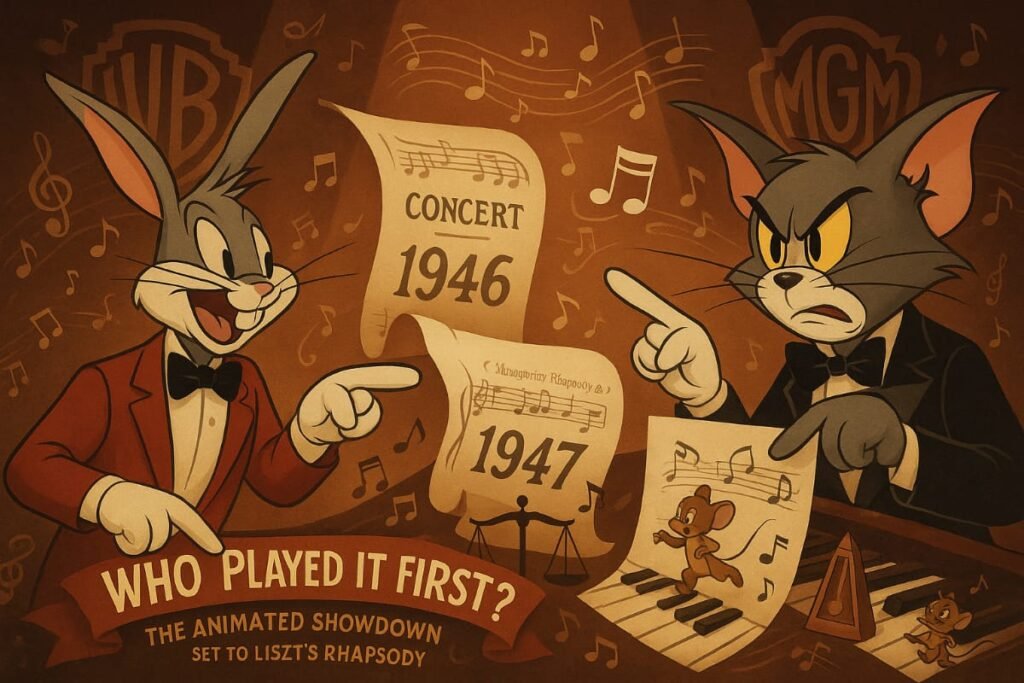
Fans and historians still debate the origins. Rhapsody Rabbit premiered in November 1946, months before The Cat Concerto hit screens in April 1947. Each studio accused the other of copying.
However, production timelines suggest both were likely developed independently, inspired by the same famous composition.
Music as the Third Character
In both shorts, Liszt’s rhapsody isn’t just background music it’s part of the story. The piano score dictates pacing, heightens emotions, and amplifies the comedy. Each keystroke, pause and crescendo is synchronized with the action on screen.
Cultural Legacy and Influence
- Timeless appeal: Both shorts continue to entertain audiences decades later through TV reruns and streaming platforms.
- Inspiring future works: Their success influenced music-driven episodes of Animaniacs, Looney Tunes, and even The Simpsons.
- Lasting recognition: While The Cat Concerto took home the Oscar, Rhapsody Rabbit remains a fan favorite.
Why the Tom and Jerry The Cat Concerto Comparison Still Matters
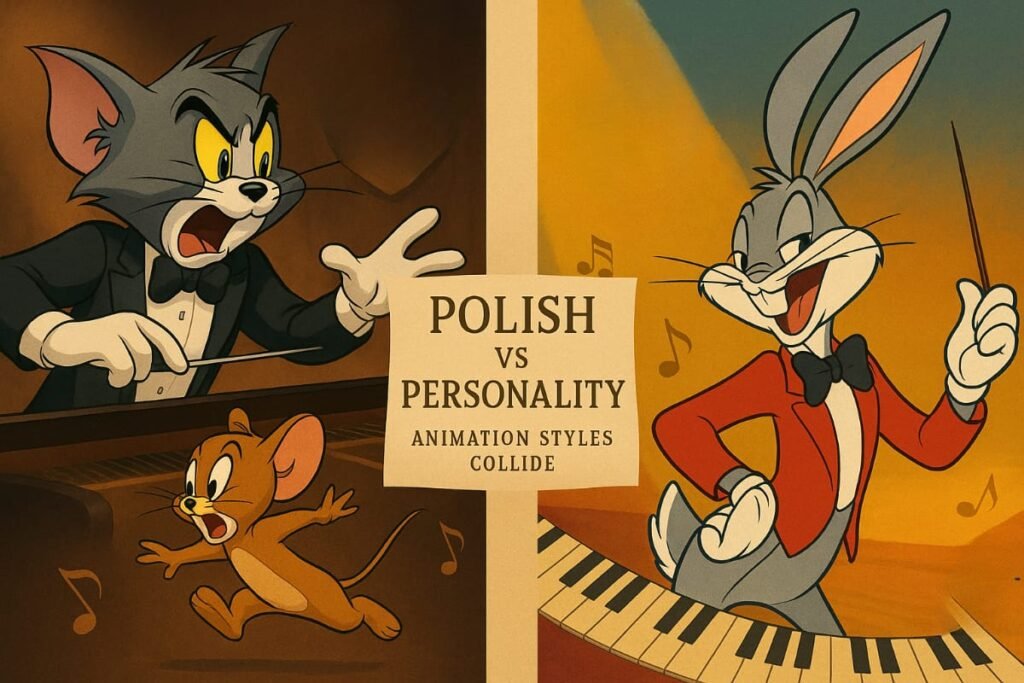
Generations later, fans still revisit these shorts, analyzing every frame and debating their merits. For some, it’s the elegance and award winning artistry of The Cat Concerto; for others, the witty banter and charm of Rhapsody Rabbit reign supreme.
Both cartoons prove how music and animation can combine to create unforgettable, wordless storytelling.
Why This Comparison Still Resonates
Even decades after their release The Cat Concerto and Rhapsody Rabbit continue to spark conversation among animation lovers.
Maybe it’s the timeless humor, the flawless blend of classical music and chaos, or simply the nostalgia of Saturday morning cartoons.
These shorts aren’t just funny they’re artistic statements that show how much storytelling can be packed into just a few minutes of animation. That’s why fans keep revisiting them comparing every frame and choosing sides.
Summary of Key Differences:
| Feature | The Cat Concerto | Rhapsody Rabbit |
|---|---|---|
| Studio | MGM | Warner Bros |
| Release Year | 1947 | 1946 |
| Main Characters | Tom and Jerry | Bugs Bunny |
| Award | Academy Award winner | No Oscar, fan favorite |
| Comedy Style | Slapstick & visual | Verbal & situational |
| Music Use | Synchronized action | Meta and comedic |
In the end, both cartoons serve as timeless examples of how animation music and humor can create lasting cultural icons.
Fan Reactions and the Ongoing Debate
Even today, the Tom and Jerry The Cat Concerto comparison sparks lively discussions in fan communities. Some prefer Tom’s expressive, silent struggle with Jerry, while others enjoy Bugs Bunny’s snappy humor. Social media polls and cartoon forums regularly reignite the debate, proving that these shorts still connect with audiences across generations.
Why These Shorts Remain Timeless Classics
Both The Cat Concerto and Rhapsody Rabbit continue to win over new viewers, blending classical music with playful chaos. Their humor transcends language and age, making them just as entertaining now as they were in the 1940s. This lasting appeal is why the Tom and Jerry The Cat Concerto comparison remains a favorite topic among animation fans.
Conclusion
While The Cat Concerto may have the Oscar, Rhapsody Rabbit has Bugs Bunny’s personality and humor. In the end, this Tom and Jerry The Cat Concerto comparison shows that both are masterpieces timeless examples of animation at its finest.
FAQs
Why do people compare The Cat Concerto and Rhapsody Rabbit?
Because both revolve around a piano recital disrupted by a mischievous character, set to Liszt’s Hungarian Rhapsody No. 2.
Did one cartoon copy the other?
There’s no definitive proof. Most evidence suggests both were developed independently but coincidentally shared the same musical theme.
Which cartoon is better?
It depends on taste. The Cat Concerto is more elegant and polished, while Rhapsody Rabbit wins with wit and personality.
Is Hungarian Rhapsody No. 2 in the public domain?
Yes, making it a popular choice for films, cartoons, and concerts.
Where can I watch them?
Both are available on classic cartoon collections, streaming platforms, and occasional TV reruns.

